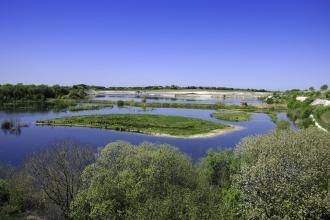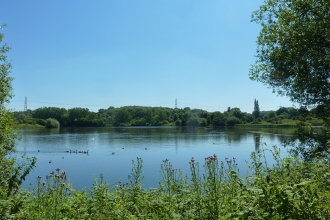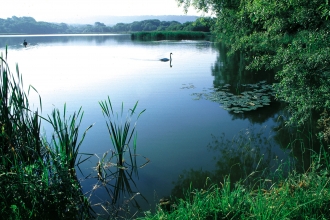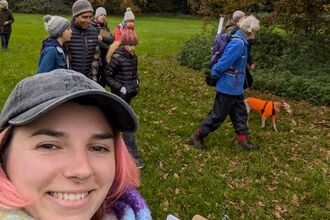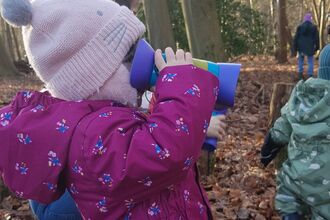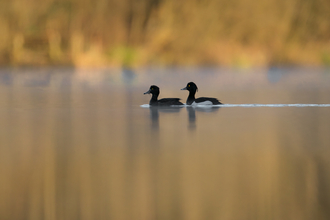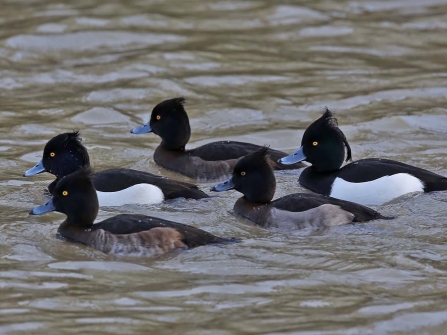Simon Barnes memorably described this phenomenon in his book How to be a Bad Birdwatcher when he said that he never goes birdwatching, rather, wherever he finds himself he watches, listens to, and is captivated by, birds.
Many who are similarly minded want to share the pleasure with others. But, where to begin?
This blog post aims to help readers answer that question. It’s not intended to be an exhaustive article covering every aspect of birdwatching. That would be a much longer article! It’s aim is to enable you to take the plunge and get started. The good news is that there has never been a better time to get started. There are wonderful guidebooks, websites, and Smartphone apps all of which make the learning process much easier. Further good news is that it won’t cost you a fortune to get started.
1. Where should I go?
There's no need to go anywhere! Birds are all around us. If you spend a little time watching and listening to birds in your garden, public parks, in woodland, along riverbanks, at the seaside, even in towns and cities, you'll soon realise that there is a multitude of birdlife everywhere.
2. Where to begin?
During the initial learning period here are a few things to concentrate on:
- where did I see this bird?
- how big was it?
- how did its size compare to other birds around it?
- what colours and patterns did its plumage & bare body parts (bill, legs, claws etc.) have?
- what was it doing? (perching, singing, feeding, preening)
- what was it eating?
- was it alone, in a pair, or in a flock?
- what was its song or call like?
The more you learn the more questions of this type you will have and the easier it will become to identify the bird/birds you are watching or listening to.
Fortunately, there is a consistent method for describing the body features & feathers of birds. Don’t be frightened by the detail initially, general descriptions are adequate for species you will encounter most often. However, as your interest deepens, it pays to familiarise yourself with the terms used to describe what is called the bird’s ‘topography’. The knowledge you gain will help you identify species that are trickier to tell apart.
It's helpful to note things down in a notebook soon after you see them. Alternatively, if you have one, record some notes at the time onto your Smartphone.
If you can sketch, it's even better to draw what you've seen. Don’t worry if you have only rudimentary sketching skills. The important thing is to record what you see as best you can. The more you do it the easier it becomes. If you are a digital photographer you could take a record shot. Some birdwatchers take photos and/or videos by ‘digiscoping’ using the camera in their smartphones attached to their telescope using a special adapter. There are lots of options open to you to record what you’ve seen or heard.
Learning more about birds can be easier, quicker, and more fun if you go birdwatching with a more experienced friend. Ask someone who you know who can help you on your way.
3. Guide books, apps, & websites
I'm a great fan of the Collins Bird Guide but there are many others to choose from. Take a look at a few and then decide which one suits you best.
No-one is born knowing how to identify birds. It's a skill that develops over time. The more you do it the better you become at it. A good guidebook will help that development and is a good investment.
Bird identification apps are becoming ever more prevalent and may be a useful additional aid.
There are also some great resources available online. The BTO have produced a marvellous series of ID videos which are a great help in identifying some tricky similar species.
Song and calls may be all we experience encountering a bird. They are also very helpful in identifying birds. The Xeno Canto project is aiming to make the songs and calls of all the world's birds available online. This is one of the recordings they hold of the beautiful song of the Nightingale. If you know someone who can already identify bird song and calls ask if you can go out with them & if they can help you learn the commoner ones you will hear. Try to interpret what you hear. How would you describe what you hear? To give one example, the call of the Willow Warbler has been described as a ‘lyrical cadence down the scale’.
4. Equipment
It's possible to see and hear a lot without any equipment at all but the whole experience is enhanced by a decent pair of binoculars. This is a good description of what to consider when purchasing binoculars. It's possible to get a good pair without breaking the bank. Always try before you buy. BBOWT organise equipment days in association with Opticron at some of their reserves where you can try out different binoculars and telescopes in the company of experts. Check the events webpage for details of when the next event is happening. As your interest in birdwatching deepens you’ll probably want to invest in a telescope and stand. We’ll cover this topic in a future blog post.
If you are going out of the urban environment birdwatching to a reserve, or for a walk in the countryside or by the sea you’ll need some reasonable quality waterproofs, preferably of subdued colours that will help you blend in to the habitat you are in. From personal experience I would recommend that you get a coat with plenty pockets that you can close and/or a rucksack big enough to carry notebooks, guidebooks, sandwiches, flask et al.!
5. International, national, and local societies
Birds don’t pay any attention to borders. They move freely across the globe. Their conservation exemplifies the value of thinking locally and acting globally. In my case I’m a member of the Oxfordshire Ornithological Society, BBOWT, the RSPB, & Birdlife International. All of us can play our part in ensuring that bird populations remain healthy for future generations to enjoy.
Now, start birdwatching today! You won’t regret it. It will enrich your life.


